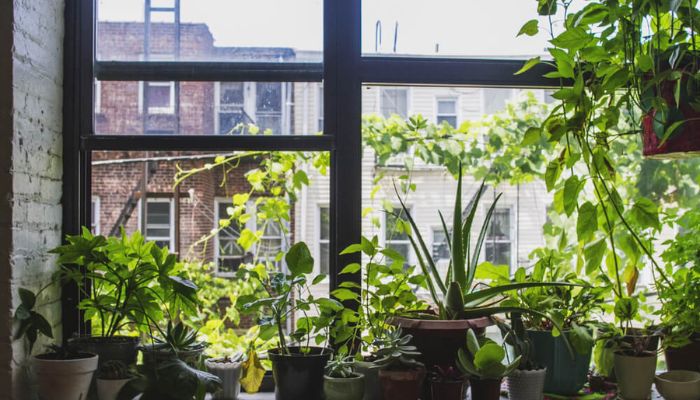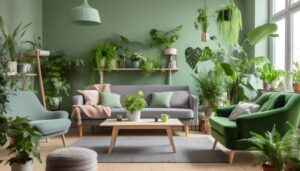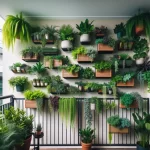As an urban gardener with over 7 years of experience growing vibrant plants in my small apartment, I’ve discovered some simple techniques to help any indoor greenery thrive. Whether you have a black thumb or limited sunlight, you can cultivate a gorgeous botanical oasis with just a bit of knowledge. Read on “What Are Some Simple Tips for Growing Beautiful Plants in Apartments?” for useful tips.
Start With Low-Light Warriors One of the biggest obstacles for apartment gardeners is the lack of bright light. Before purchasing any seeds or nursery plants, assess the sunlight patterns in your space. North-facing windows receive very little direct sun, while south-facing ones get sunlight for much of the day. East and West exposures fall somewhere in between.
I’ve had great success with low-light houseplants like philodendrons, Chinese evergreens, parlor palms, and pothos. For medium or bright light spaces, consider adding prayer plants, spider plants, peace lilies, and succulents. As a rule of thumb, low-light plants can tolerate 12 feet from a window, while medium- and high-light varieties need closer proximity.
Tips for Growing Beautiful Plants in Apartments
Maximize Available Sunlight
While you can’t change the direction your windows face, you can optimize sunlight capture. Keep foliage pruned so plants don’t block each other’s access to rays. Rotate containers every few days for even exposure. Install mirrors or reflective surfaces like white paint or foil on nearby walls to bounce additional light onto greenery.
I once grew tomato seedlings on a dim north-facing balcony by angling movable mirrors to concentrate sunlight onto the sprouts for several hours a day. They thrived and produced over 20 sweet cherry tomatoes that season!
Choose the Right Planters
Terracotta and ceramic pots leach moisture, demanding more frequent watering. Self-watering containers, with water reservoirs on the bottom, help maintain consistent soil moisture. For many apartment plants, I prefer plastic nursery pots nested inside cachepots for aesthetics. The inner pot holds soil and roots, while the outer vessel hides it from view.
Match pot size to a plant’s growth habit, only repotting into a slightly larger container when truly necessary. This encourages faster maturation and flowering. As an experiment, I grew the same pothos cultivar in 4-inch, 6-inch, and 8-inch pots. The smaller volumes filled out more rapidly.
Provide Optimal Soil Conditions
Apartment plants often cope with less-than-ideal dirt. To prepare a premium potting mix, combine equal parts sterile potting soil, perlite or vermiculite for drainage, and compost for nutrients. Or simply amend store-bought all-purpose potting mixes with worm castings or organic granular fertilizer.
Moisture-retaining gel crystals prevent soil from drying out as quickly between waterings. I sprinkle them into all my container plants for added insurance against neglect.
Water Wisely Apartment
Water Wisely Apartment plants need much less hydration than outdoor gardens. Overwatering is a common houseplant killer. Check the soil moisture with your finger before adding any water. Drench thoroughly until it drains from the container’s bottom, then don’t wet again until the top few inches become slightly dry.
Droopy leaves often indicate under-watering, but yellow, curled foliage can mean the plant is getting too much. I instruct my building’s maintenance staff to only add water when the soil is partly dry and my plants show signs they’re thirsty.
Promote Air Circulation
While apartment plants don’t receive natural wind, you can prevent fungus and mold by ensuring adequate airflow around leaves. Use oscillating fans on low speed and avoid overcrowding plants on shelves or windowsills.
I regularly rotate my container plants a quarter turn each week so all sides receive equal ventilation. This simple trick also guarantees even sunlight exposure.
Monitor for Pests
Enclosed urban environments with central heating/AC systems can become breeding grounds for plant pests like spider mites, mealybugs, and aphids. Check leaf undersides every few weeks and treat any invaders immediately with natural remedies like neem oil or insecticidal soap.
You can also wipe leaves with a damp paper towel every month to physically remove potential critters. As a preventative tactic, I sprinkle a thin layer of diatomaceous earth on top of the soil to shred soft-bodied bugs.
Rejuvenate Overgrown Plants
When houseplants outgrow their space, don’t hesitate to give them a rejuvenating prune. Cut back leggy stems by a third, trim off old foliage and flowers, divide congested root balls, or propagate new plants from healthy cuttings. This stimulates bushier, compact new growth.
I recently pruned back a 10-foot-tall ficus tree that was touching my apartment’s ceiling. By removing the top third of the branches, it immediately began sprouting smaller side shoots closer to the base. Six months later, it’s a fuller, shapelier 6-foot version.
With the right cultivars and care methods, virtually any apartment gardener can create an indoor oasis, no matter how tiny your living space is. Don’t be afraid to experiment with different plants, pots, soil mixes, and sunlight supplementation ideas until you find the perfect formula for your personal growing conditions. I hope you get all the tips on “What Are Some Simple Tips for Growing Beautiful Plants in Apartments?”.

Katia Hougaard is a PhD candidate at Imperial College London, specializing in plant-aphid interactions. With a background in Plant Biology from the University of Texas at Austin, she focuses on the genetic and physiological resistance of Medicago truncatula to pea aphids. Katia has served as a science advisor for startups in vertical farming and the houseplant industry. She also mentors students and manages a research lab, contributing her expertise to both academic and entrepreneurial projects. At SuperbPlants.com, Katia shares her in-depth knowledge of plant biology, emphasizing sustainable practices and scientific integrity.






